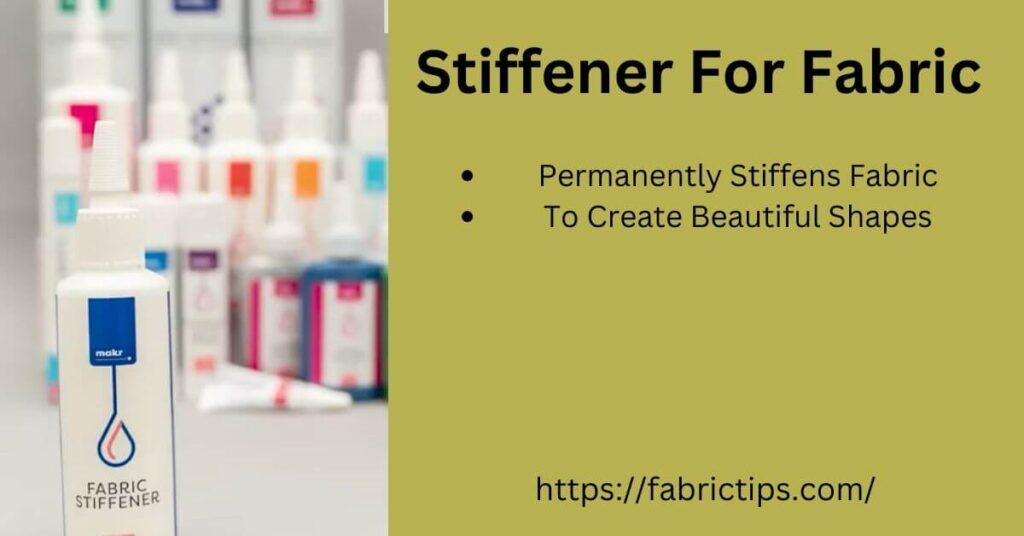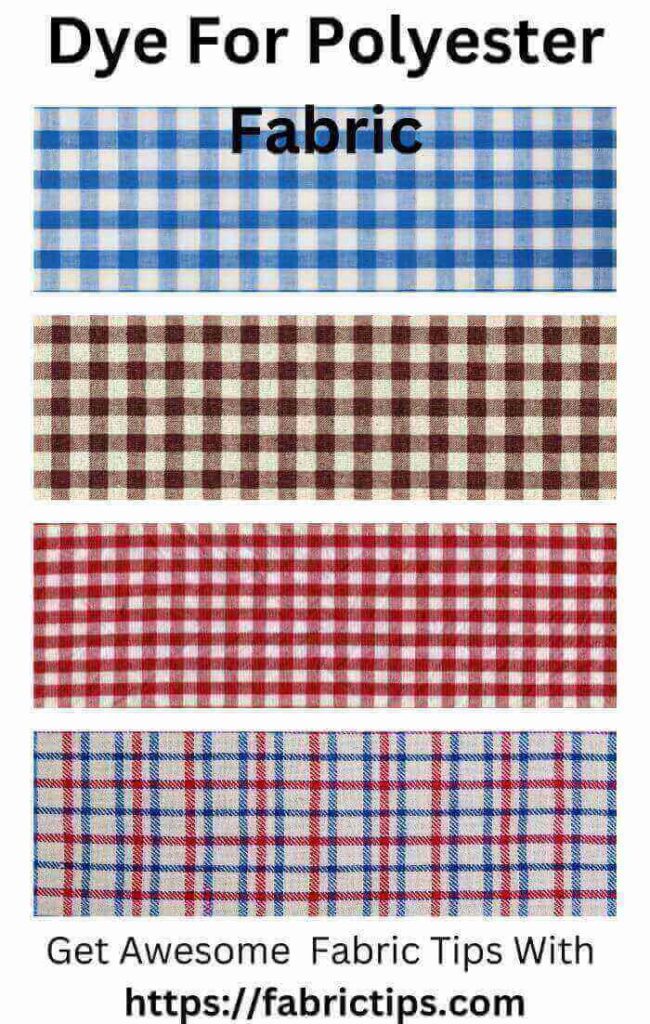Last Updated on December 13, 2025 by Wahid
The best stiffeners for fabric can be made with homemade recipes. Fortunately, making DIY fabric stiffener doesn’t have to cost a lot. Most of these methods use ingredients & equipment you already have at home.
So, fabric stiffening materials will be valuable when you work with cloth that won’t fray easily. A stiffener for fabric can prevent wrinkles by adding crispness. As a result, the material can hold an intact 3D shape while retaining its rigidity.
We’ll help you find all those lovely homemade textile recipes!
Have you ever wondered what is the best stiffener for cloth? We’ve compiled 5 DIY stiffening methods you can make at home right now. Well, let’s see them deeply.
Why Are Fabric Stiffeners Important?
However, before we delve into how you can make fabric stiffener yourself, let’s discuss why you should.
- The market does not always have fabric stiffeners available.
- Also, sometimes they are more pricey than they ought to be.
- If you want to make shirts, blouses, pants, etc., with collars, cuffs, buttons, tabs, & whatnot, stiffeners are required.
- However, stiffening sprays can be found commercially.
Nevertheless, in the case it isn’t available, home-made stiffeners can be made by following these steps.
How To Stiffen Fabric For Sewing
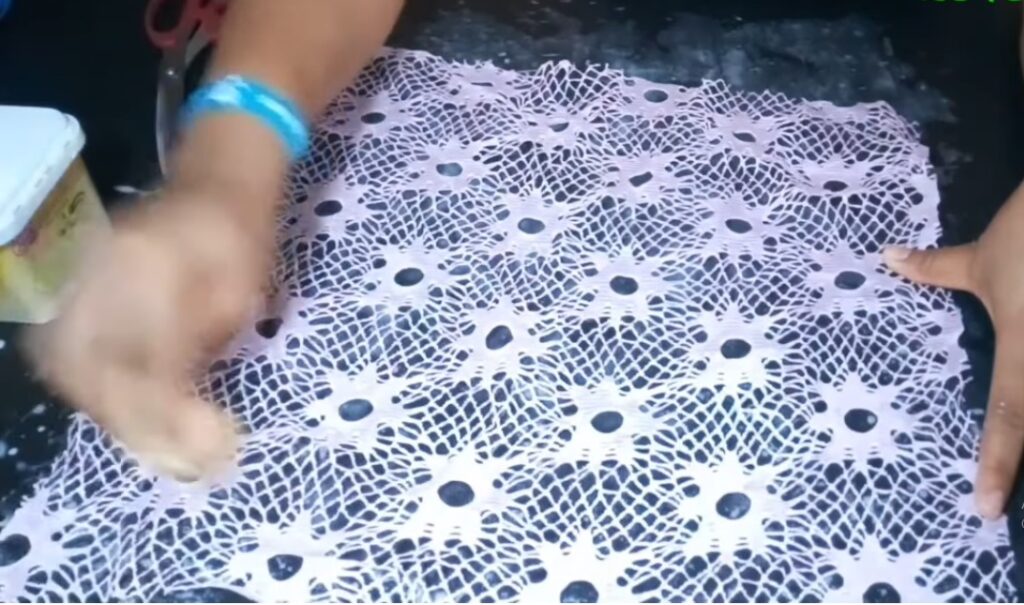
- You can stiffen collars, cuffs, tabs, facings, and openings when sewing.
- Actually, any area where stiffness would improve hold & hang.
- In addition to fusible and sewn in stiffeners, interfacing is also used.
- In most cases, sewing patterns indicate which pieces require interfacing, although they could be used differently in different parts of the outfit.
- Before sewing your textile with the interfacing, you should test it out on a scrap.
A Guide To Making Fabric Stiffener: 5 Easy Homemade Methods
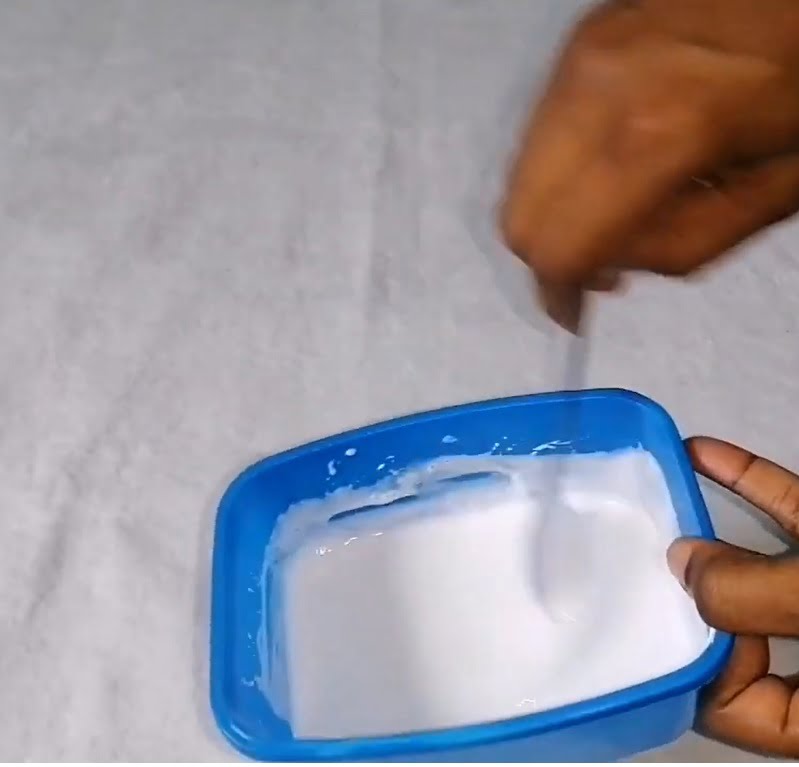
Stiffening is the key to making button plates, tabs, cuffs, collars, or tabs. Here’s where textile stiffeners can help. There are commercially available stiffeners for fabrics, but they seem a bit pricey. Is that right?
Again, the quality and availability of the product raise doubts about your purchase. Right now, you have the most effective option, DIY recipes you can prepare at home. Depending on your job, you might need to stiffen it temporarily or permanently.
Hence, we have compiled 5 different strategies to deliver the desired results. Now, it’s time to reveal the recipe.
Recipe 1: Make With Corn Starch
In theory, “corn starch” should be something you’ll always find in your kitchen. Using this will stiffen your cloth as well. That’s awesome, isn’t it? Due to its organic nature, its safety is 100% guaranteed. You can achieve excellent results with a little effort.
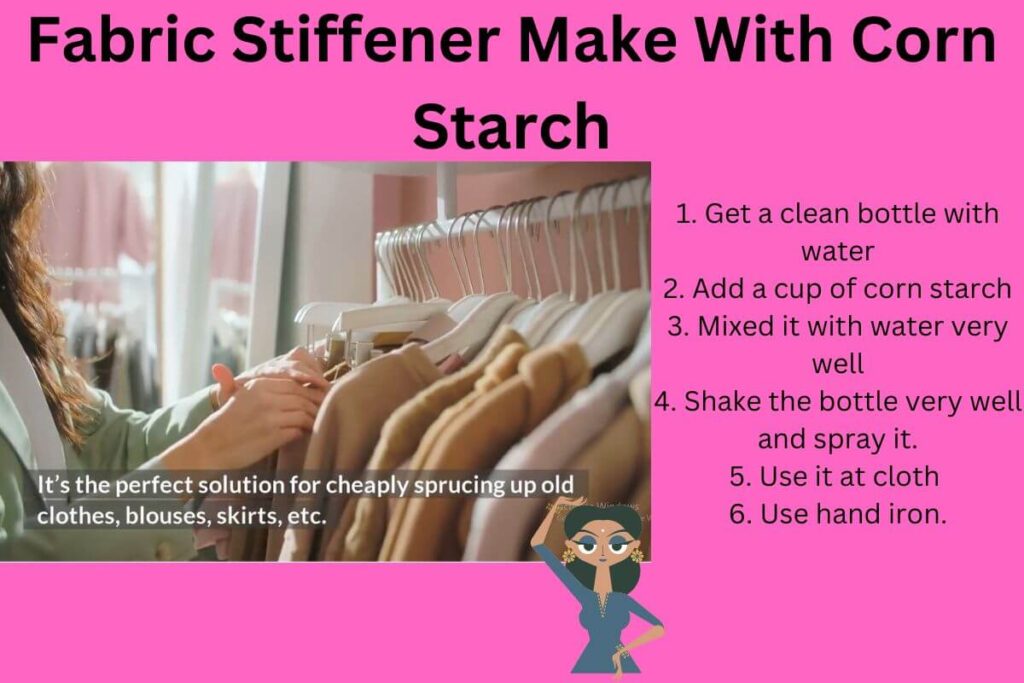
Ingredients You’ll Need:
- Corn Starch
- Boiling Water
- Cold Water
Making Process:
Step 1:
- Put 1 teaspoon of corn starch in a bowl and pour ¼ cups of cold, chilled water over it.
Step 2:
- Fill ¼ cups of water with the same mixture and boil it.
Step 3:
- Slowly stir the cornstarch into the boiling water, and stirring continuously until it bubbles.
Step 4:
- After the solution has reached boiling point, turn off the heat and allow it to cool to room temperature.
Step 5:
- To avoid lumps, stir continuously.
Step 6:
- Once your solution has reached the desired thickness, it’s time to start making your recipe.
Quick Pro Tip:
- Dark clothes may be stained with white spots caused by corn starch.
- Therefore, stay alert, & make sure you use it on light-colored fabrics.
- Additionally, be sure to wash the fabric afterwards with soap & warm water.
- By doing this, you are guaranteed to leave no residue behind!
Uses:
You will be able to achieve the desired stiffening by soaking crochet snowflakes in a starch solution.
Recipe 2: Use Elmer’s Glue
“Elmer’s glue” can be used on any fabric to stiffen it. You’ll find that it’s a certified product without any toxic elements, so it’s definitely a good choice. Hence, it is completely safe.

Ingredients You’ll Need:
- Elmer’s glue
- Water
Making Process:
Step 1:
- Equal parts of water & Elmer’s glue should be used. Remember, your fabric size determines how much mixture you need, however, the ratio stays 1:1.
Step 2:
- Mix both the asked ingredients. You may use a mixer or any whisking tool for that.
Step 3:
- Using a whisk, make sure the mixture is creamy but thin.
Step 4:
- To harden the fabric permanently, soak it in the mixture thoroughly and intensively, then squeeze it out.
Step 5:
- Ensure that the fabric soaks up all moisture & dries completely. The crisp stiff cloth is now ready for use.
Quick Pro Tip:
- It should be dried well without complex twists.
- Be sure to remove all of the excess.
- You should also ensure that there are no glue traces after it has dried.
Uses:
If you require a permanent stiffening result, then this is the best option for you.
Recipe 3: Using Gelatin
“Gelatin” hardens fabric perfectly and is widely used. Well, collagen is an important component of it. Collagen is composed of proteins that are responsible for hardening materials. Your fabric will have a “mild crisp” since this natural stiffener isn’t water-resistant.

Ingredients You’ll Need:
- Gelatin
- Hot Water
- Normal Water
Making Process:
Step 1:
- In a bowl, combine 1 tbsp of gelatin with 2 cups or 16 ounces of normal-temperature water.
Step 2:
- Once the gelatin has dissolved, stir the mixture well.
Step 3:
- For the gelatin to be activated, let the mixture rest for almost 30 minutes.
Step 4:
- Now is the time to start heating your water.
Step 5:
- In order to get a relatively thin density, pour around 4 cups of boiling water slowly over the mixture.
Step 6:
- Then that’s it. Now you can dry the stiffened fabric by dipping it into the solution and drying it.
Quick Pro Tip:
- Rather than spraying the mixture on the textile, let it soak in the solution.
- Upon lifting your cloth, squeeze gently to remove moisture to prevent damage or wringing.
Uses:
These stiffeners are best suited to chiffons and silkier fabrics that require mild, gentle stiffening. With clothes that aren’t too hard, you get stability.
Recipe 4: Rice Starch Stiffener
Are you considering stiffening your fabric using the scratch you have at hand? To extract starch from rice, you can use an unconventional method. You won’t spend much time and effort on it while getting permanent results.

Ingredients You’ll Need:
- Rice
- Water
Making Process:
Step 1:
- Prepare 4 cups of rice and 2 cups of water by combining them together.
Step 2:
- After boiling the rice for 10 minutes or so, the starch has been extracted completely.
Step 3:
- Make sure the water is strained out of the rice and separated from it.
Step 4:
- You can make the consistency thinner by adding extra water and waiting for it to dilute.
Step 5:
- Ensure the rice water does not become colder when compared with room temperature. If not, the mixture will become too thick & lose its stiffening ability.
Step 6:
- Right now, the fabric can be soaked in it for 5 minutes to crisp them up.
Quick Pro Tip:
- When the fabric has been squeezed out of excess water, hang it on a sunny day to dry.
- By doing so, permanent stiffening can be achieved without unpleasant odors.
Uses:
Whether you are tailoring blazers or other fabrics that require crisp edges, you can achieve an average stiffness with this DIY. Thus, washing won’t cause your fabric to wrinkle.
Recipe 5: Making With Flour Starch
“Flour starch” has excellent binding capabilities. Therefore, it can be used to produce stiffener for fabric as a homemade process. The product is natural, organic, and non-toxic.
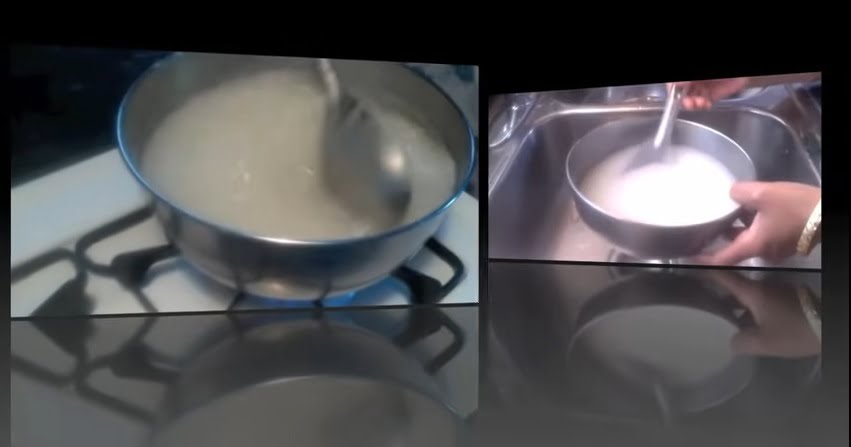
Ingredients You’ll Need:
- Flour starch
- Water (boiling and cold)
Making Process:
Step 1:
- Firstly, mix ½ cups of cold water with 1 tablespoon of flour, in a bowl.
Step 2:
- Once the mixture has become creamy, keep mixing.
Step 3:
- The remaining ½ cups of water should be used for boiling.
Step 4:
- To the boiling water, whisk the flour mixture briskly.
Step 5:
- The mixture should be blended until it resembles gravy. Let it cool until it’s cool enough to handle.
Step 6:
- Some prefer a thinner consistency, so they add a little more water. The product is ready for use!
Quick Pro Tip:
- In spite of its natural hardening properties, using this recipe does not result in long-lasting stiffness.
- Instead, washing clothes with soap will soften them immediately.
Uses:
It works best for clothes that require stiffening only during crafting or sewing tasks, and not after washing.
If you looking for the best fabric stiffener spray, click here.
Creating Homemade Permanent Stiffeners: 3 Different Methods
After many washes, your clothes will remain crisp & stiff due to the permanent stiffening. Rather than buying commercial stiffeners, why not use your own home items? Luckily, this process is easy and hassle-free for you.
Similarly, you might try the homemade techniques below for a long-lasting stiffening effect:
1. Use of “Elmer’s Glue”
- Elmer’s glue requires equal amounts of water and glue. Use the mixture and spread it on your fabric.
- It turns it highly resistive to water.
- Thus, stiffens for a longer time.
- This technique works great for projects with quite hard material like a fabric basket or a door wreath.
2. Use of “Corn Starch”
- Corn starch is the simple one to use.
- The only thing you need to mix is ¼ cup cold water and 1 tbsp of corn starch.
- You can now apply it on any fabric by adding another 1/4 cup of boiled water.
- When your fabric specifies wrinkle-free criteria, this is the most effective DIY.
- Fabrics such as linen, cotton, rayon, nylon, and silk will be permanently stiffened.
3. Use of “Rice Starch”
- Put 2 cups of water & 4 cups of rice into a pot then begin boiling.
- It should have a thin consistency, not too thick.
- Make sure your fabric is soaked for no longer than five minutes.
- The fabric and edges will be extra crisp with this recipe and it’s all because of the hardening & outstanding pasting effects.
- It is ideally suited for fabrics such as blazers.
How Effective Are “Commercial” Stiffening Sprays?
The truth is, it does not hold a direct response. Whether or not to use commercial stiffening spray depends on your personal needs and preferences. However, if you’re unsure whether to go ahead or not, we’ve put together some pros and cons to help ease your mind.
Pros:
- An easy method for spraying and applying
- Provides quick results
- Drying results in impressive stiffness
- You can find them in any nearby craft and art store
- It is usually free of toxins
- Multi-coating capability
Cons:
- Quite expensive
- In some cases, the smell spreads
- Availability is never guaranteed
Hardening Fabric Using Commercial Stiffener: 10 Easy Steps
Do you plan on using the commercial stiffeners spray on fabric? If so, then you’d better get your act together and come up with a plan. Here are all the steps.
Step-1:
- Ensure that the work surface is covered with the plastic or old newspaper.
Step-2:
- The fabric can be shaped to suit your needs.
Step-3:
- Give it some time to settle.
Step-4:
- After that, you can spray the stiffener in the commercial form.
Step-5:
- Make sure your spraying bottle is at least 6-8 inches away from the material.
Step-6:
- Spray tip should not be too far away from fabric. If not, it will spread and become messy.
Step-7:
- The cloth should be completely wet by the end of spraying.
Step-8:
- It should try to stiffen on its own.
Step-9:
- A hairdryer or hanging under the sun can speed up the drying process.
Step-10:
- It’s possible to change the stiffening effect when it’s dry.
If your clothing needs more stiffening, repeat the steps once more or several times.
Can You Stiffen Fabric with Mod Podge?
Yes, mod podge is a great way to stiffen textiles. The decoupage process allows your material to become permanent and retain its crisp appearance.

- Firstly, applying it and using it will be easy.
- The application possibilities are endless.
- There are many uses for this product that users enjoy.
- A firm, clear, and shiny coat is achieved.
- The easy-to-clean method will benefit you greatly.
- However, it’s price quite expensive.
- As a result, a crafts enthusiast hesitates and doubts their purchase.
- In spite of this, stiffness seems to last much longer than you expected.
Step-By-Step Mod Podge Stiffening Guides
Fabric can be stiffened quickly with Mod Podge. It can be applied instantly to your garb without any hassle.In order to do that, you must follow all of the directions carefully. The steps are as follows:

Step-1:
- Before you begin, make sure the fabric is washed and ironed.
Step-2:
- To protect the surface, lay wax paper down over the fabric.
Step-3:
- Now, take a thick brush and dip it into the mod podge container directly.
Step-4:
- Put medium layers on your fabric and begin spreading it.
Step-5:
- The stiffener needs to be dragged over the fabric until it covers the whole area.
Step-6:
- You should let it dry a few hours before using it.
Finally, you end up with a stiff, wrinkle-free cloth after applying mod podge.
FAQs
01. Stiffening Fabric: What Is It?
Fabric stiffens fabric with interfacing. The glue can be heat-activated in one or both directions or you can sew it in. For different applications, sewing interfacing comes in different thicknesses. Typically, it is black or white in color.
02. Is it possible to stiffen fabric yourself?
The following are 3 methods or recipes that I know of:
- Mod Podge or Elmer’s Glue
- Cornstarch Mixture
- Flour Mixture
03. Can you use hairspray to stiffen fabric?
There was a suggestion that may temporarily fix the problem, but it will wear off after a while. Rather than soaking into the fibers, it’ll be applied to the surface of the fabric. Moreover, after getting wet, the fabric will no longer be stiff.
04. How do you stiffen fabric to hold its shape?
Add 2 cups of water to 1 tablespoon of corn flour or starch. Ensure that all lumps are removed and that the mixture is smooth. Using a spray bottle, you can spray this solution onto your material. Alternatively, this solution can be soaked into the fabric.
05. Can I use PVA glue to stiffen fabric?
When PVA glue hardens, it permanently stiffens fabrics. To obtain an even consistency, dilute the glue with water & mix continuously. Paintbrushes are perfect for applying glue.
06. How can I make my rope stiff permanently?
Corn starch is an inexpensive and effective way to stiffen craft materials. Corn starch and water and are mixed to create a thick paste for soaking into cloth & other materials. Starch stiffens materials once they have dried.
Final Verdict
As you read this, you’ve gathered everything you need to know about making stiffener for fabric at home. It’s worth trying all 5 DIY recipes. With the right one, you’ll be able to advance in your art & find the one that suits your needs.
Our recommendation if you are looking for more temporary stiffening would be to use “flour or cornstarch” stiffeners. However, “rice starch” is recommended if you want a permanent solution.
Using these easy methods and simple ingredients, you can make your own fabric stiffeners at home. Happy Crafting.
